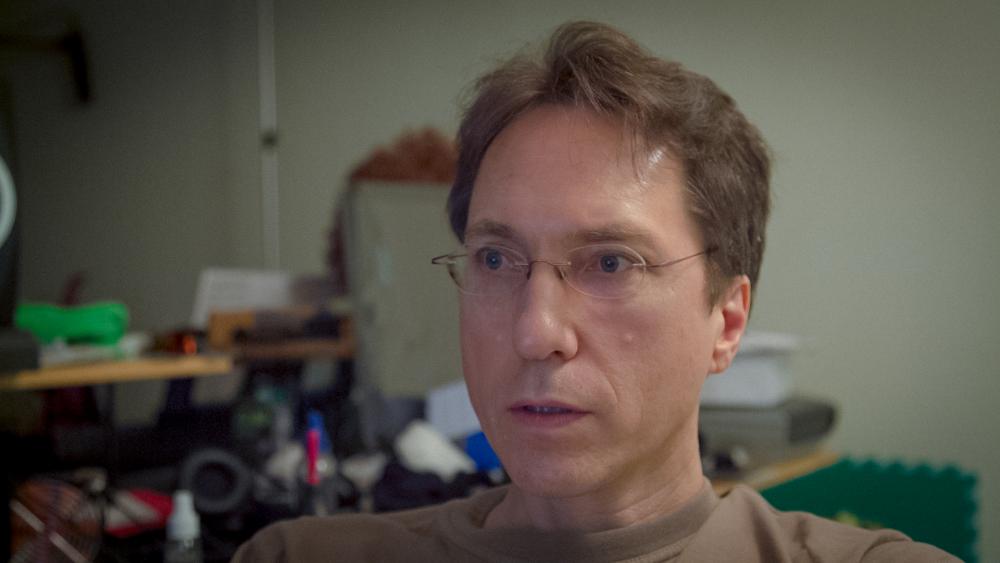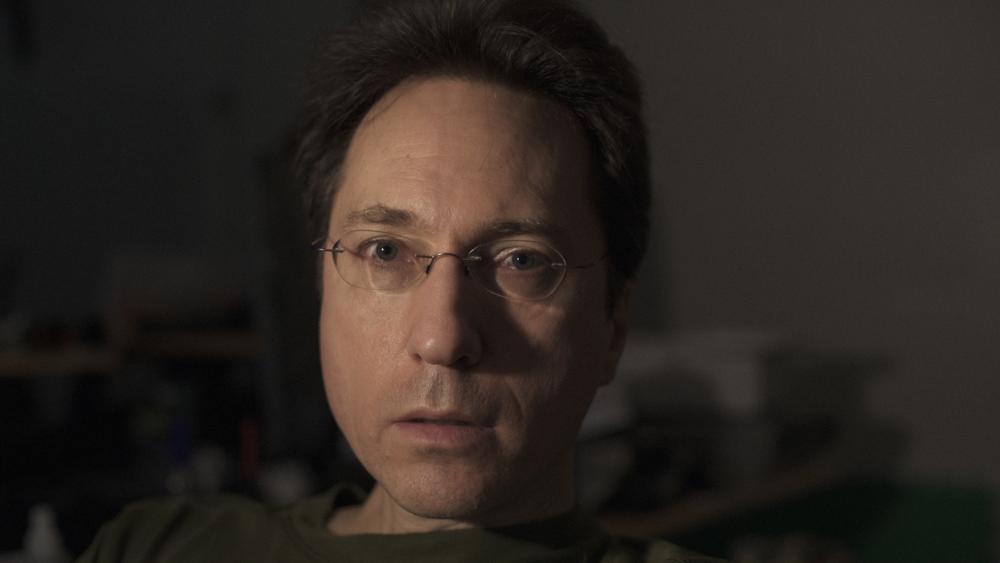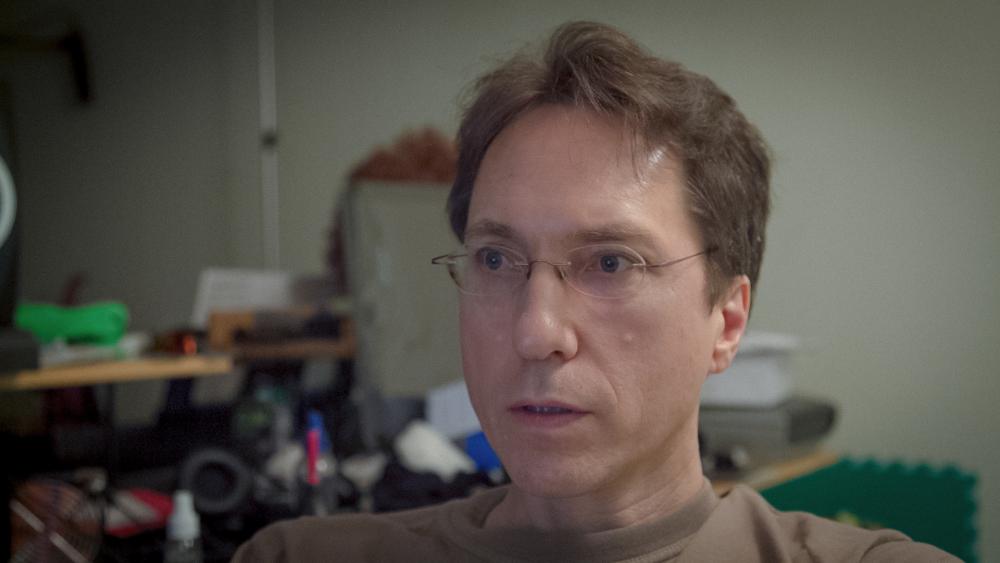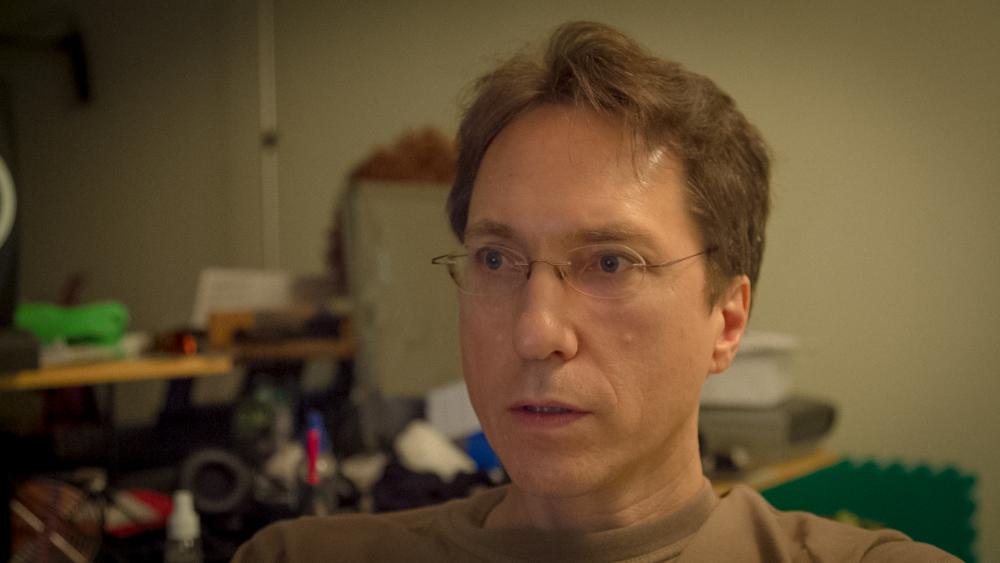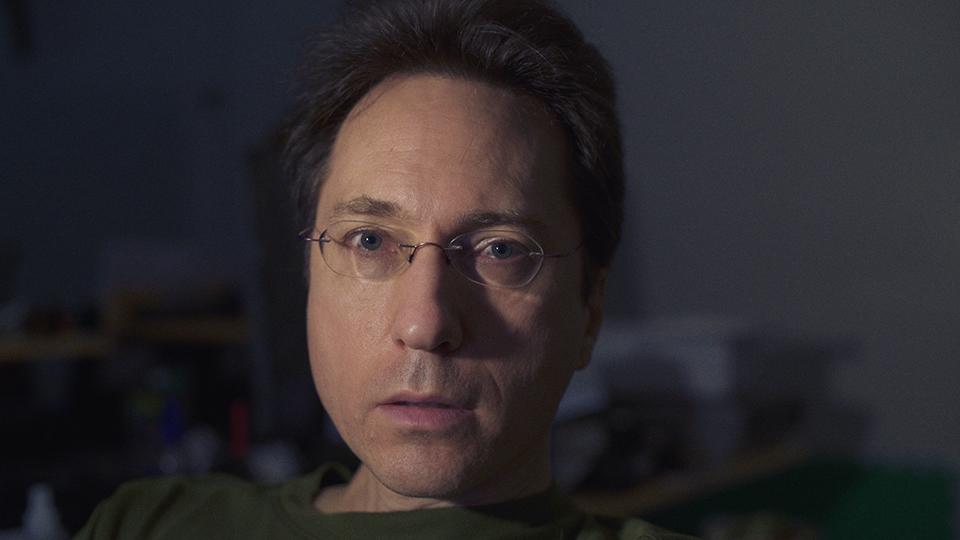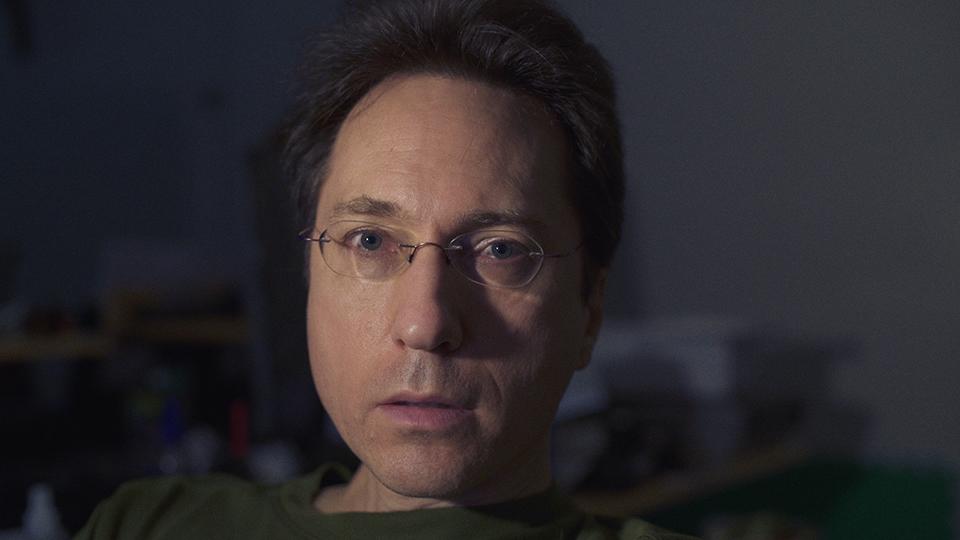-
Posts
1,839 -
Joined
-
Last visited
Content Type
Profiles
Forums
Articles
Everything posted by jcs
-
After shooting and editing extensively with the 5D3 (H.264 + RAW), Sony FS700, GH4, and A7S, based not only on my personal opinion, but on feedback from actors/models/clients, cameras which produce better skin tones are preferred. I found this out by shooting the same scenes with multiple cameras and reviewing the results with others. Doing research online I found that skin tones were the single most important element for cameras used to make money. Resolution, frame rates, viewfinders, ergonomics, etc., are all very important too, but skin tones are number one. Skin tones affect emotion, and emotion is used to tell a story or sell a product. What cameras provide the best skin tones? ARRI and Canon. What cameras are used the most professionally? ARRI and Canon. What cameras are used the most in Oscar winning films (last few years)? ARRI. What DSLR was used most in feature films? Canon (5D, 7D, 1D): http://shotonwhat.com/?s=5D. Why did the C100/C300 far outsell/outrent the FS700, even though the FS700 has way more features (and can even look full frame with a SpeedBooster)? C100/C300 produce better skin tones with less effort. In the end, it's possible to get similar, sometimes even better (rare/unusual lighting conditions) skin tones from the GH4 and A7S vs. the 5D3, however on average, the 5D3 requires a lot less time and work. How do we know when skin tones are better, when it's so subjective? Shoot the same scene with multiple cameras then show the results to multiple people for feedback. Some DPs do a ton of testing to figure this out before shooting a feature: http://www.hurlbutvisuals.com/blog/2013/10/arri-alexa-vs-canon-c500/
-
It appears there's an issue with the A7S's Slog2 via HDMI: http://forum.atomos.com/showthread.php?53033-Sony-A7s-quot-breaks-quot-SLOG-2-on-it-s-HDMI-output! My understanding is it's not really Slog2 via HDMI (try the same scene recorded internally). Someone mentioned something about messing with 0-255/16-235 ranges in post (not clear if for a fix or workaround). vas- I would expect both the GH4 and A7S to provide more detail than the 1DC. Narrative work and people tend to look better softer, so many DPs use filters and other tricks to reduce detail. The 1DC's softness and color science are what give it a more filmic look vs. the other two cameras (which can also look filmic with filters and the right settings/post work).
-
Hitfabryk- the GH4 makes an excellent 4K studio camera! The Natural picture profile is a great place to start. Cine-D and -V also have their uses. Max- I find it helpful when starting a new project to try out all the cameras to see how they perform for the conditions. It's not just the lighting, but also the color of light reflected from the environment- "the radiance map" (especially important for green/blue screen work). Try all the picture profiles with the A7S- the results may surprise you. The A7S is a decent stills camera (Canon 50mm F1.4, Metabones NEX to EF IV, Sony RAW, processed with ACR): And with a little extra work with profiles for video (based on the conditions- there isn't one profile for everything), the A7S looks pretty good. The 5D3 with Neutral/Faithful and GH4 with Natural profiles work pretty well in many conditions (PP6 comes closest with the A7S). If the 5D4 gets 4K and 60p (at least for full-res 1080p), we'll have a competitive, solid all-around still/video camera (not having autofocus for Canon lenses on the A7S is challenging).
-
When embedding videos from vimeo and deleting the extra text spaces above/below, the embedded video frame becomes enormous. Must delete and re-paste link to fix (and not remove extra spaces).
-
For narrative, for sure anything goes. If you worked on those films in your post above, what camera and lighting did you use? If those aren't your work, perhaps post some examples from vimeo.com/path88/videos? Here's a GH4 example which I feel shows good skin tones (Natural profile, Panasonic 12-35 F2.8 lens), overcast with indirect reflected brown light: 5D3 RAW, 24-105 F4L, LCW Fader ND v1, overcast daylight, processed with ACR+AE (color shifts during playback courtesy of ACR): A7S, stock PP6, Sony 18200 lens, LCW Fader ND v1, overcast daylight (poster image; different lenses, light throughout video): In the first video, the skin looks good with a warm/orange tint. In the second video, skin looks pinker (more magenta; higher color temp source light, though it sometimes swings to green due to ACR), and to my eye (and the actor's) natural and pleasing. The final video (poster) looks good on it's own, but when compared to the 5D3 and GH4 looks greener though still pleasing (during playback there's magenta bias, green bias, yellow bias, etc.). Now viewing these images on different monitors will make some look better and some look worse, depending on which way out of calibration they go. For example, on a monitor with too much green, the middle video (still frame) will look less magenta but still good, however the bottom video (still frame) will look too green and less pleasing. I'm still learning and appreciate feedback from every angle. It's art so some will like and some won't. What is helpful is understanding why.
-
Why not post a few screenshots of examples of what you feel are good skin tones for feedback? Even without directly asking models/actors/clients, when a camera creates nice skin tones they are much happier. Based on their feedback, this is their preferred order for skin tones: Canon 5D3, Apple iPhone 5S, Panasonic GH4, Sony A7S, Sony FS700. I don't own any Nikon gear but would put them up near Canon. Black Magic can look better than Sony. From others work on the high end for skin tones: Kodak 5248 film, ARRI Alexa/Amira, Sony F35/F65, Panasonic Varicam, Red Dragon, Red Epic, Sony F55, Sony F5, Sony FS7. Canon Cxx are mid-pro and sit above the F55 for skin tones. There's a filmic quality to the cameras at the Red Epic level and above that put them above the Canon Cxx cameras (but require more light (except the Varicam) and more post work). I could see the C500 shooting RAW doing better vs. a Red Epic, but it would be pretty close (Red keeps improving).
-
The 1DC wins over the A7S and GH4 for skin tones. In 1080p full frame mode, the 1DC looks about the same sharpness as the 5D3 (perhaps a hair sharper). The A7S in full frame mode provides a lot of detail and sharpness. None of these cameras record 4K/UHD internally in full frame mode. At this time I'm not aware of another camera that does at any price (The ARRI 65 records in 65mm). Whole will be first? Canon with the 5D4 or a 1DC2?
-
Stock Cine-D can work in some situations (his point is don't use Cine-D with lots of tweaks). I'm currently shooting for in-camera so there's less work (and surprises) in post. I do this by testing profiles and settings with the camera hooked up to a full-sized HDTV (46" and larger).
-
$20/mo for PPro is worth it. There's also a 30-day free trial. AE is worth it for advanced tasks and effects. I did our last short all in PPro, editing everything in real-time. AE is very slow (not GPU accelerated for most tasks)- hopefully Adobe will bring GPU accel to AE soon. Or drop AE and merge functionality into PPro (Hitfilm shows one way this could be done).
-
It looks like the last Magic Lantern for 5D3 (1.1.3 firmware) update was October 7th 2014. It would appear the developers are focusing on the Apertus Open Source camera project and/or there's nothing needing fixing for 5D3 RAW. Getting RAW out of the 5D3 was a very rare event. Moving forward, hacking cameras won't be as much of a priority as cameras are now providing most of the features wanted by customers. More camera systems will become open source, with people building more and more custom cameras out of modular components and custom software. A replication of what happened with PC computers. The big players will use advanced tech in miniaturization to stay competitive: cameras that fit in your palm with 'eagle eye' liquid optics, super high frame rates, advanced IS, ultra high quality beyond HDR, and massive compression-to-quality ratios.
-
Max- I used Vegas for a stereo 3D edit a few years ago. It's a nice NLE however I found too many showstopper bugs. Premiere Pro CC on both Windows and OSX works great. If using a decent GPU (currently using a GTX770 on Win64 and OSX), most coming editing and effects are real-time. It's also very stable... when pushed to the limits sometimes work-arounds are needed, but so far no showstoppers. Hitfilm 3 is also worth a look. For $300 (vs $30+/mo for Adobe Cloud) it's a full featured editor, color tool, and can also do advanced effects as needed by action/adventure/SciFi (including compositing). It's kind of like Premiere Pro and AE all in one (simplified). I tested Hitfilm 2, and it was pretty solid, however not nearly as fast as Premiere Pro for editing. It was much faster than AE for effects. Version 3 is supposed to be faster.
-
Max- check out this shot from Gone Girl: She's green, he's pink, however in the context of the (moving) movie you're not consciously noticing, though emotionally you are!
-
andrgl- going point regarding using the vectorscope for skintones. To do this in Premiere, it's necessary to use the Crop Effect to show just a patch of skin when using the scopes (then turn off the Crop effect when done with skin color). Below is the 1080p version before film convert (not using scopes though). This is a tricky, low light test using a 40w incandescent bulb and LED light (much higher color temp) from an HDTV at the same time. I'm also seeing color changes (hue and saturation) in the JPG's viewed in the browser after uploading vs. in Premiere/Photoshop. I reduced saturation and uploaded it again until it looked closer to what Photoshop shows: Here's the 5D3 RAW frame with a cooler color temp, note how it changes the mood/emotion of the shot: Again with with saturation turned down to more closely match the original color before the sRGB conversion color shift when saving to JPG (Save to Web from PS): Notice how the background colors don't seem to change much, but how the changes to skintone color are very apparent.
-
Hi j.f.r- 6K refers to the Red Dragon, Alexa is 2.8K (+ 3.4K Open Gate: http://www.arrimedia.com/news/view/48/alexa-xt-open-gate). Sorry if I wasn't clear- I think Gone Girl would have looked better if shot on Alexa (better color science, and IMO, an enhanced emotional effect), even though the camera is much lower resolution (2.8K/3.4K for Alexa vs 6K for Red Dragon). Where resolution can have a dramatic, powerful emotional effect is for wide establishing landscape shots as with the "8K" F65 in Oblivion (really 6K). The color and skintones in Oblivion are also first rate (as is the music/sound): currently the number one demo for my home theater. At the highest end (F35, F65, (but not F55 or below)), Sony has produced cameras with first rate color science. Sony could do better color in the same way Canon could provide better features, but for whatever business reasons, they're holding back for now. Nice article on 6K editing of Dragon footage with Premiere Pro CC: http://blogs.adobe.com/premierepro/2014/10/gone-girl-marks-yet-another-milestone-for-adobe-premiere-pro-cc.html
-
Max- watch top movies (including shot on film!) with the same eye! You'll see the same thing re:colors. It's possible to make the top image less yellow/warm (done for mood) and I suspect your monitor has a yellow/green bias. When I notice too much green etc. I recalibrate the monitor (color drifts over time).
-
<pre-humor>What if we needed an "Internet License", kind of like a Driver's Licence, where we all had to learn how to be friendly, helpful, and non-confrontational before being allowed to post. That would make a much nicer environment to discuss ideas.</pre-humor> http://xkcd.com/386/ Back to the point, wouldn't you agree that the A7S does a nice job with mostly-artifact-free downscaled 1080p? 5D3 H.264 is as clean and alias free as can be, right? Canon's clearly blurring it before compression, however 5D3 ML RAW has sufficient detail and color information, right? If Canon took the ML RAW buffer and debayered it to AMaZE or ACR level quality before 422 10-bit H.264 compression we'd have a winning combination. I don't currently have a need for 4K beyond what the GH4 can do, and if Canon released a 5D4 which could take the place of both the 5D3 and A7S, I'll sell the 5D3's and A7S. While I'd prefer a 4K 5D4 (5D4K!), I doubt Canon is reading blog posts to determine product direction (likely based on analytics from sales and interviews with pro filmmakers).
-
Hey Max- right on don't sweat the negative comments. If there's any truth in them, you can still learn from them though. I missed the drama however I don't think you have anything to be concerned about. I have been doing extensive tests with the 5D3, A7S, and GH4 for up-close narrative shooting, including challenging lighting conditions (mixed lights (including from monitors)). The 5D3 does the best with the least work, however I've spent a lot of time to get good results from the A7S. Sometimes the A7S is too clean in low light- banding can be present (and adding noise/grain in post sometimes isn't enough to fix (requires masking and blurring- time consuming)). Regarding ML RAW being time consuming: mlrawviewer (http://www.magiclantern.fm/forum/index.php?topic=9560.0) has come a long way. I'll do a test at some point with a real shoot, but I think batch transcoding direct from ML RAW to ProRes of only good/usable takes won't really take that much time and effort. The resulting files are very large compared to the 50Mbps A7S files, however the 14-bit RAW to 10-bit 444 (AMaZE Debayer) QuickTime files with C-Log are a fantastic starting point for grading (archival quality). Batch processing to DNG is also possible, allowing even more flexibility when needed with ACR+AE. These DNGs can also be directly edited in Premiere Pro CC (but without much control on Debayering and grading as with ACR). For low light shots, the 5D3's noise and 14-bits (10 if using 444 ProRes via mlrawviewer) helps prevent banding and overall looks quite filmic (DNG processed with just ACR): The A7S can have decent skintones but takes a bit more work (lots of PP Effects including Filmconvert):
-
4K is indeed helpful for landscape, greenscreen, and post work, however color and skintones are more valuable any time people will be in the shot. It's the same reason the C100 outsold/outrented the FS700, and likely why the C100 II (1080p) will do the same against the FS7 (4K). The only 4K material I can watch is on youtube (or vimeo download, on 2.6K monitors). I'm a tech savvy consumer, even have a 3DTV (Samsung), however there's no compelling reason to get a 4K TV yet. That will happen when Apple TV, Amazon Prime, etc., have 4K content. Netflix has some UHD content which can be watched on certain 4K TVs: https://help.netflix.com/en/node/13444 . Upgrading from SD to HD was a huge improvement. HD to UHD isn't nearly the same effect unless one has a monster TV and you sit close enough. Some directors apparently aren't into resolution at all: Interstellar in IMAX (top 70mm theater: TCL Chinese in Hollywood) was very soft for most of the picture. I thought perhaps there was a projector issue, so I watched it again with another group of friends in digital 4K: it was just as soft (but not any softer vs. IMAX). At least on the second viewing they had fixed the audio issues. For delivery (vs. post flexibility), resolution is important to a point, but all we have to do is look at the top cameras for filmmaking, TV, and commercials (where money is made from motion pictures): ARRI dominates by a wide margin with 1080p cameras (Alexa/Amira). I would chose the Amira's 3.2k upscale to UHD/4K over the 6K Red Dragon any day if the budget allowed. Skyfall in 4K (uprezzed Alexa) looked sharper, more detailed, and with nicer color than Interstellar shot in 70mm IMAX! I just watched Gone Girl shot and edited in 6K on Apple TV (1080p) and felt they could have done better with the Alexa. If our eyes are watering because the image is so soft (5D3 without post sharpening with wide/landscape shots), then resolution becomes an issue. Color = emotion, which is the number one point for narrative, not resolution. I just ordered a Tiffen Black Pro Mist 1/4 to soften the A7S, lower contrast slightly, and provide some glow in-camera (saves time and looks a bit different vs. doing something similar in post). It would be helpful for your camera reviews to include extensive skin tone and people tests, graded with calibrated monitors using challenging lighting (cheap LEDs and fluorescents, mixed lighting) as well as continuous spectrum lights (sun, incandescent, remote phosphor LED etc.).
-
Hey Max- the colors are more magenta than yellow on my calibrated displays. I picked one of these up in August for $262 (price went up): http://www.amazon.com/X-Rite-EODIS3CCPP-Display-ColorChecker-Passport/dp/B007V9N65O/ If you calibrate your display(s), you'll have a better starting place for color (audience displays aren't likely calibrated, however starting with calibrated color will ensure nothing too extreme is likely when viewed on an uncalibrated display). Apple devices tend to have decent color (iPhone/iPad/MacBooks)- I check final renders on these devices for color quality.
-
Hopefully Canon's market analysis shows that it will be highly profitable to release the 5D4 with 4K (internal). While there is no 'one camera for everything' yet, the 5D3 is currently the best value stills and video camera for people and skintones. Just turning off the extra Gaussian blur and saving to 422 10-bit H.264 on the 5D3 hardware would be amazing (ML RAW like quality with small files and easy workflow).
-
If you're shooting bands, definitely the A7S. Clean lowlight is very helpful, the 50Mbps 1080p files are small, high quality, and easy to edit. The A7S with the Sony SEL18200 lens makes a great run & gun / documentary camera using IS, AutoFocus, AutoISO, and if radically changing lighting colors, AutoWB. When used with full frame lenses and all manual settings, shots can look filmic, and if using a tweaked color profile, careful manual white balance, broad-spectrum lighting, and a little post work, skin tones can look decent. For low light, try tweaking PP3 and PP4. For brighter light, try tweaking PP5 & PP6. For very bright, high dynamic range shots, tweak PP7 (start with changing Color Mode from S Gamut to Pro, Rec709, or Cinema). Gammas CINE1, CINE2, and SLOG2 are good for bright light, CINE3, CINE4, REC709 are better for normal or low light, Color Modes Cinema and Rec709 look nice for skin tones, Pro is a decent balance of skin tones and scene colors. I've been using the GH4 mostly for greenscreen and outdoor/nature/landscape in bright light shots only. For up close work, Canon 5D3 (H.264) looks very nice for skin tones, and the softness lends to a filmic look. When more detail and color is desired, 5D3 ML RAW is the best deal available right now. If you also need high quality stills, 5D3 hands down. Looking forward to seeing what Canon does with the 5D4! More A7S skintones (stock PP6 with post work in Premiere Pro CC): http://brightland.com/w/delta-bts/
-
https://vimeo.com/114978513 (review) https://www.youtube.com/watch?v=XXMLjBR4lzI (music video: clean and lots of detail- A7S skintones need work (part of the solution is to use continuous spectrum lighting (tungsten (+ China ball), remote phosphor LED, broad-spectrum FL (kino), high PRI* LED, etc.)). * High CRI rating isn't a good indicator of color for photography.
-
Looks pretty good Ed, nice color, not like Canon perhaps more like Nikon. Very high contrast- blacks are very black, can it be boosted in-camera? If not, what happens if boosted in post (noise-wise)? From your and Andrew's examples, blues (the sky) appear a bit unusual (too little red / too much green). Would be helpful to see more skintones, especially the same shots compared to other cameras. Perhaps the color issues are related to LUTs- helpful to see ungraded footage from the camera compared to other cameras. H.265 is a lot more advanced than H.264- hopefully a GPU decoder can handle it in real-time for direct NLE editing. For the near future it would be to Samsung's advantage to update the firmware with double the bitrate H.264 to provide equivalent quality to H.265 and allow direct editing of footage.
-
I purchased an FS700 with SpeedBooster as an upgrade to the 5D3. While it has many well known features and advantages over the 5D3, the one area where the 5D3 is superior is color for skintones. Talent even finds the iPhone 5S skintones superior to the Sony for skintones. Now that I have an A7S, which has slightly better skintones than the FS700 and a better overall image, the FS700 is only relevant for super slomo. I would expect the FS7 to have better skintones than the A7S but not a good as anything from Canon. Where folks ponder why Canon holds back on features, it's curious why Sony holds back on skintones, given how beautiful the F35 and F65 look. The top motion picture cameras are known for top skintones (ARRI). The stop stills camera maker is also known for skintones (Canon). It makes sense in both cases as pleasing skintones (not necessarily chart accurate!) are what the audience cares about the most (this is rooted deeply in evolutionary biology: emotional communication and health status). Unless Sony has upped the FS7's skintone game, the C100m2 will likely far outsell the FS7.





